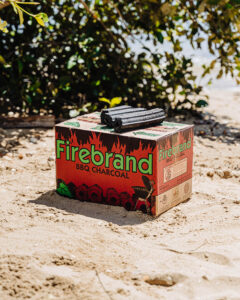All Posts
This Is How Much Charcoal You Need For Grilling BBQ
Newbie grillers are often stumped by this question: Just how much charcoal or fuel do you need for your cook? If you’re new to the game, you might be thinking one of two things:
- More is more = you can never have enough charcoal, so just light up as much as you can!
- Light a few pieces because charcoal can get damn expensive, and pray to the BBQ gods it will be enough to finish the whole cook.
The right way to measure charcoal for your BBQ
While it would be convenient to have a formula, the reality is that many variables can affect your cook so it’s quite tricky to pinpoint exactly how much charcoal you’ll need. Factors like the type of fuel, cooking method, equipment and the temperature of your grill should all be considered. But don’t fret – thanks to extensive testing of our Firebrand BBQ fuel over the years, we’ve found a solution that can lead to the perfect cook every time.
Quick tip 1: Use the 1:1 method.
A good rule of thumb is that the ratio of BBQ charcoal to meat should be equal. This means that for every kilogram of meat, you should use a kilogram of Firebrand Premium Briquette BBQ Charcoal for your grill. This works for any meat cut, be it bone in like ribs or a T-bone steak, or boneless cuts like a brisket or strip or sirloin steaks.
If you prefer using our Firebrand Premium Natural Hardwood Lump Charcoal, you’ll need a ratio of 1.5:1. That’s because the volume ratio of charcoal briquette to lump is about 1:1.5 kg. When it comes to heat output and burn time, you’d need 1 and ½ amounts of lump charcoal to get the equivalent performance from briquettes.

In one of our cooks, we loaded two Firebrand Chimneys (or charcoal starter) with approximately 4kgs of Firebrand Rotisserie Grade Briquettes each. We were able to grill these two skewers of meat with a total weight of 8kg for 4 hours.

Quick tip 2: Mind the heat.
While the 1:1 method is a good rule of thumb, you should also remember that too little charcoal could mean your grill won’t get hot enough, while too much charcoal might make it too hot. Monitoring your grill is a must, so keep in mind to use less charcoal if you’re cooking low and slow and use more if you’re going for fast, hot cooks.
Quick tip 3: Decide on your charcoal.

Briquette and lump charcoal burn differently, which can affect the amount of charcoal you’ll need for your cook. The heat output will be higher when using briquettes than lump charcoal, especially when you use Firebrand’s hex shape log briquettes vs. standard pillow shape briquettes.
Firebrand briquettes, which have a unique hex design and are made from 100% hardwood sawdust with zero binding agents and chemical additives, allow for a long lasting, fierce burn and extreme heat, making them perfect for grilling, smoking or rotisserie cooking. Our premium and professional variants are guaranteed to outperform any other briquette product in the market – we’re sure you won’t find anything else that burns hotter and longer!
On the other hand, Firebrand lump charcoal is produced using super dense, single origin citrus hardwood. It lights quickly, making it the charcoal to choose when you want hot and fast grilling cook ups with a consistent burn.
Choose our Premium variant for small to medium sized pieces that are great for low ‘n slow cooking in kettles, bullet and drum smokers or other applications where you need the fuel to sit nice and compact. If you’re going for an open type of cook, our Professional variant comes in larger lumps and is the perfect partner for your meat, as it imparts a light smokey flavour without overpowering your rubs and spices. In any case, you’ll get to experience authentic charcoal flavour without the lumps affecting the taste of your protein!
Quick tip 4: Check the burn time.

When doing an open type of BBQ, i.e. open grilling, rotisserie, skewers or churrasco, lump charcoal can give you between 2 to 3 hours of burn time. On the other hand, briquettes can burn for up to 4 to 5 hours. If you want to mix briquette and lump, i.e. half briquettes and half lump charcoal, you can expect burn time between 3.5 to 4 hours. Of course, this still depends on the quality of fuel you use.
When doing low ‘n slow cooking in a smoker like the Kamado, an offset smoker or even kettle BBQs (with lid on), you can expect double burn time compared to open grilling applications. This means lump charcoal can burn between 4 to 6 hours while briquettes can give you between 8 to 10 hours. Still, every BBQ is different, and these burn times will largely depend on your fire management and how efficiently you can control airflow.
Quick tip 5: Know when to add charcoal.

If you’ve been following our tips but find that your grill is losing heat midway through your cook, you can add more charcoal using these reminders:
- Light a new batch of charcoal in a separate chimney or charcoal starter.
- Let the charcoal burn until it’s grayish white hot. Once it turns this colour, it’s ready to begin cooking.
- Add the prepared charcoal to your grill.
Conquering your cookout might seem intimidating, but the only way for you to become a BBQ Master is through experience. Keep our tips in mind, but also remember the most important thing: Just enjoy the grill!
Learn more about BBQ fuel and how to choose the right one for your grill here. Check out our blog or sign up for our newsletter for more BBQ guides!

